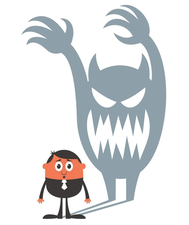Image processing with Go
Programming Snapshot – Go

© Lead Image © Martin Malchev, 123RF.com
Go comes with an image-processing toolkit right out of the box. In this month's column, Mike Schilli explains how to walk through a photo's pixels to detect the foreground by comparing values against a threshold and shows how to manipulate the original by creating a nice looking silhouette.
Until recently, my headshot at the end of every "Programming Snapshot" article showed a much younger version of myself, dating back 15 years, so I grudgingly shot a new one the other day. While doing this, the idea occurred to me to try out my new favorite language Go's suitability for image processing. How hard could it be to generate an artful silhouette of the person shown in the photo?
Of course, with some Gimp skills this could be done quite quickly. However, what is far more interesting is the question of how an image processing program walks through the pixels of Figure 1 and finds out which of them actually belong to the person (the foreground) and which to the lighter background. When a foreground pixel is found, the algorithm can then go ahead and set it to black, which in the digital world means it has its red, green, and blue channels set to 0,0,0. Easy enough, right?
[...]
Buy this article as PDF
(incl. VAT)
Buy Linux Magazine
Subscribe to our Linux Newsletters
Find Linux and Open Source Jobs
Subscribe to our ADMIN Newsletters
Support Our Work
Linux Magazine content is made possible with support from readers like you. Please consider contributing when you’ve found an article to be beneficial.

News
-
Debian Unleashes Debian Libre Live
Debian Libre Live keeps your machine free of proprietary software.
-
Valve Announces Pending Release of Steam Machine
Shout it to the heavens: Steam Machine, powered by Linux, is set to arrive in 2026.
-
Happy Birthday, ADMIN Magazine!
ADMIN is celebrating its 15th anniversary with issue #90.
-
Another Linux Malware Discovered
Russian hackers use Hyper-V to hide malware within Linux virtual machines.
-
TUXEDO Computers Announces a New InfinityBook
TUXEDO Computers is at it again with a new InfinityBook that will meet your professional and gaming needs.
-
SUSE Dives into the Agentic AI Pool
SUSE becomes the first open source company to adopt agentic AI with SUSE Enterprise Linux 16.
-
Linux Now Runs Most Windows Games
The latest data shows that nearly 90 percent of Windows games can be played on Linux.
-
Fedora 43 Has Finally Landed
The Fedora Linux developers have announced their latest release, Fedora 43.
-
KDE Unleashes Plasma 6.5
The Plasma 6.5 desktop environment is now available with new features, improvements, and the usual bug fixes.
-
Xubuntu Site Possibly Hacked
It appears that the Xubuntu site was hacked and briefly served up a malicious ZIP file from its download page.


